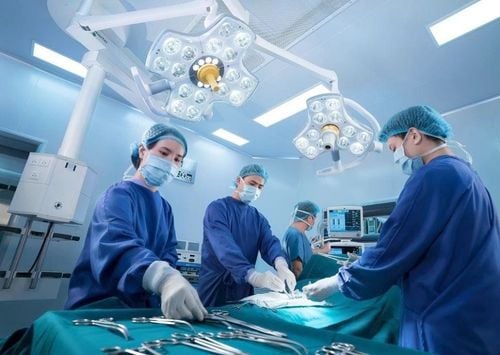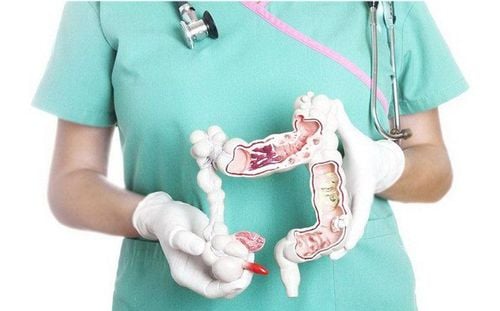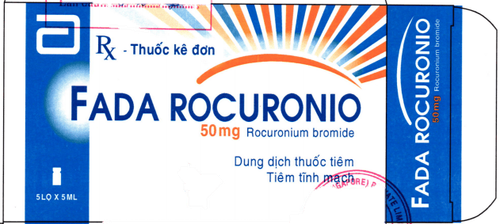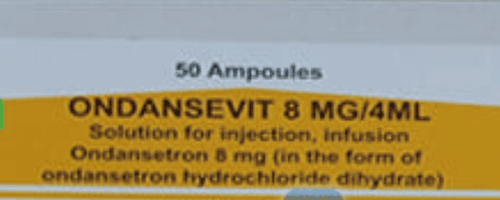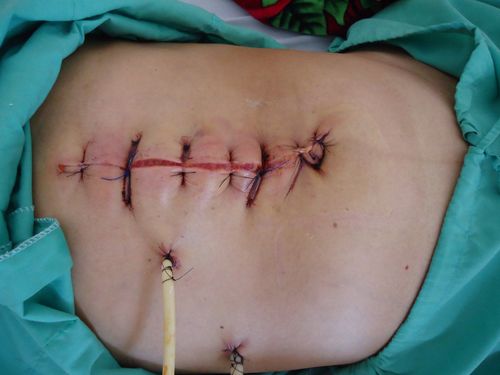This is an automatically translated article.
The article was professionally consulted by MSc Vu Van Quan - Department of General Surgery & Anesthesia, Vinmec Hai Phong International General Hospital. The doctor has more than 10 years of experience working in the field of General Gastroenterology.Surgical site infection is one of the most common nosocomial infections. According to research in developed countries, about 5% of surgical patients have surgical site infections. In Vietnam, the rate of surgical site infection is higher, up to 10.5%. The prevention of surgical site infection is very important and necessary.
1. The causative agents of surgical site infection
Incisional or surgical site infection will increase the cost of treatment, prolong the hospital stay and may aggravate the patient's illness. A simple surgical site infection can prolong the hospital stay by 7-10 days, increasing the cost of treatment.The causative factors of surgical site infection include:
Pathogenesis of surgical site infection related to pathogenic microbiological factors (infectious bacteria, bacterial virulence, normal bacteriology), Type of surgery surgery, physician skill and operating room conditions (operative technique, failure to abort dead space, Tissue trauma, Drainage, Poor perfusion, operative time, surgeon's hand washing, preparation) skin, hair removal, skin disinfection, instrument sterilization, operating room ventilation, prophylactic antibiotics ...) Patient resistance (age, trauma, malignancy, metabolic disease, condition) nutrition, diabetes, smoking, obesity, contiguous infections, changes in immune response, length of hospital stay before surgery...). The source of pathogens can be from the patient's endogenous or exogenous sources from the operating room environment or hospital staff, from adjacent infection sites and from artificial devices implanted inside the patient. or from tools used for external fixation on fractures. The causative agents of surgical site infection depend on the type of surgery being performed. With surgery on the digestive system and urogenital tract, the most common bacteria are Gram-negative bacilli, Gram-positive cocci and anaerobes. Reports in developing countries show that the causative agent is mainly Gram-negative bacilli, while results in European countries show that surgical site infections are usually caused by Gram-positive bacteria.

2. Guidelines for the prevention of surgical site infections
Preparing the patient for surgery to avoid surgical site infection and measures to prevent surgical site infection include:2.1. Prepare the patient
Identify and treat all infections adjacent to the surgical site prior to surgery. Check blood sugar for all people with diabetes, avoid hyperglycemia during surgery Encourage smoking cessation, at least abstain from smoking, cigars, pipes... 30 days before surgery. The shorter the patient's hospital stay before surgery, the better.2.2. Prepare the skin
Show the patient the night before and the morning before surgery with an antiseptic solution. No need to shave hair before surgery, except for the hair around the surgical site that interferes. If you need to shave, shave immediately before surgery and use an electric trimmer. Clean carefully at the surgical site and around before conducting skin disinfection. The medicine used is Michroshield 4% or Betadine soap 10%. Disinfect the skin before surgery in a concentric circle, towards the periphery. The area to be prepared should be large enough to prolong the skin incision or create a new incision or to drain as needed. Suitable antiseptics to use are Michroshield 4% or Betadine 10%. Skin coverings can be applied in clean surgery, and the iodine impregnated type has been shown to reduce the rate of surgical site infection compared with the conventional type (Ioban ).2.3. Preventive antibiotics
Prophylactic antibiotics should be used when indicated and selected based on effectiveness against the most common pathogens, type of surgery, and published recommendations. Prophylactic antibiotics should be used in clean or uncontaminated surgery. If it is dirty or infected surgery, antibiotics are considered the real treatment. If antibiotics are used for prevention, they should not be used for a long time after surgery, if antibiotics are used for treatment, they need to be continued.Prophylactic antibiotics should be given before skin incision, ie before bacteria are introduced into the surgical site. Estimate the time it takes to initiate a prophylactic antibiotic dose for bactericidal concentrations to be established as soon as the skin incision is made. To ensure adequate tissue concentrations of antibiotics, the most effective time frame is within 2 hours, preferably 30 minutes before the first skin incision. Thus, prophylactic antibiotics must be given by the anesthesiologist while waiting for the surgeon and preparing the surgical skin. Vancomycin is not recommended as a prophylactic antibiotic. Maintain therapeutic concentrations of antibiotics in plasma and tissues throughout surgery, until at least several hours after skin closure. The dose of the drug may be increased during surgery in cases where the surgery is longer than the half-life of antibiotics, or the surgery is bleeding heavily, or the surgery is performed on obese patients.
Drugs are usually given intravenously, except in the case of bowel preparation in colorectal surgery, the drug can be given orally. For caesarean section, prophylactic antibiotics should be administered immediately before the cord is clamped.
3. Disinfect the surgical team's hands
To prevent surgical site infection, the surgical team must keep their nails short, do not wear artificial nails, disinfect their hands before surgery for at least 2 - 5 minutes, and use appropriate antibacterial drugs. Wash your hands from hands to forearms and elbows, after washing your hands should be raised and away from the body in the elbow position in the folded position, so that the water flows from the fingertips to the elbows and then falls to the ground. Dry hands with a sterile towel, then wear sterile gloves and gown. Jewelry should not be worn on the hands and arms.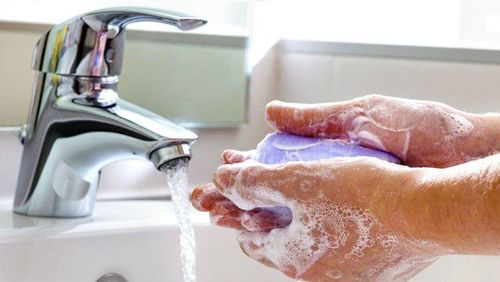
4 Prophylaxis in surgery
The operating room must be ventilated, maintained at positive pressure with respect to the vicinity and corridor, maintaining a minimum of 15 variable airflows per hour, 3 of which must be clean air. Filter all the air and recirculate it with a suitable filtration system, bringing in air from the ceiling and drawing it out from under the floor. The door of the operating room must be kept closed at all times during the operation, except when transporting equipment, tools or when it is necessary to get in and out.Limit the number of medical staff entering the sterile area. Those who are not on duty are not allowed to enter. All medical staff when entering the sterile area must wear full and correct protective equipment. Members who are not directly involved in the operation must wash their hands or disinfect their hands with an alcohol-based hand sanitizer according to the routine hand washing process. When entering the operating room, it is necessary to limit talking, walking, going out or touching the environmental surfaces in the operating room.
During surgery, it is necessary to gently and cautiously manipulate, maintain hemostasis, avoid collisions, and tissue/organic hypotrophy. It is necessary to remove all dead tissues, foreign matter and dead cavities before closing the incision.
5. Incision care after surgery
Cover the incision with sterile gauze, continuously 24 - 48 hours after surgery, only change the dressing when the bandage is soaked with blood/fluid, contaminated or when opening the incision. Instruct the patient and family on how to monitor, detect and notify when the incision has abnormal symptoms. Drainage should be withdrawn as soon as possible.Please dial HOTLINE for more information or register for an appointment HERE. Download MyVinmec app to make appointments faster and to manage your bookings easily.





